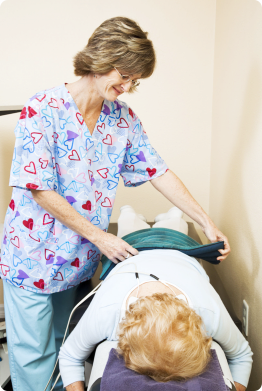 Breast reconstruction after mastectomy often involves two main procedures, the TRAMS (transverse rectus abdominis muscle) and the latissimus dorsi flap. They both consist of either using muscle tissue cut from an area or moving the muscle tissue.
Breast reconstruction after mastectomy often involves two main procedures, the TRAMS (transverse rectus abdominis muscle) and the latissimus dorsi flap. They both consist of either using muscle tissue cut from an area or moving the muscle tissue.
The TRAM procedure may be done as either a pedicle flap (which means the tissue is pulled under the skin and attached in the chest area without cutting its blood supply) or a free flap (which means the tissue and blood vessels are cut and reattached in the chest area).
In the latissimus dorsi flap procedure, an oval flap of skin, fat, muscle, and blood vessels from your upper back is used to reconstruct the breast. This flap is moved under your skin around to your chest to rebuild your breast. The blood vessels (artery and vein) of the flap are left attached to their original blood supply in your back. Because the flap contains a significant amount of muscle, a latissimus dorsi flap is considered a muscle-transfer type of flap.
These procedures involve the transferring, pulling, cutting, and relocation of tissue which often leave the patients with some side effects such as pain, bulging, hernia, strength loss, and some postural changes due to the relocation or transference of this tissue. It could also lead to decreased AROM in the shoulder of the side involved or both if a double mastectomy. Adhesive capsulitis (frozen shoulder) could possibly occur as a result of this with “cord” development in the axilla or armpit which could prevent the patient from moving their shoulder normally and become progressively worse.
Other postural changes can also occur such as thoracic or scapula pain, from the latissimus procedure as well as pain in the pectoral region from forward shoulder development.
At Excel Spine and Sports Rehab PC, we have created a post-op mastectomy physical therapy program to help the patient to alleviate physical signs that may arise from surgical or medical treatment for breast cancer. Through hands-on interventions and therapeutic exercise prescription, therapists’ help patients reduce pain, improve flexibility, strength, endurance and range of motion following cancer treatment, thus improving their function and quality of life.
Our physical therapists can perform pain management using various modalities such as cold laser, interferential and high voltage electrical stimulation, and ultrasound. Our therapists are also trained in manual therapy such as joint mobilization, stretching, and myofascial release to help assist in reducing the chance of the patient developing frozen shoulder and helping the patient to maintain flexibility in areas where the soft tissue was removed or pulled to make ready for a breast implant. It can also help to reduce the chance of scar tissue development.
After surgery, most patients may often experience weakness and fatigue and can take time to recover. As with any abdominal surgery, you may find that it’s difficult or painful to sit down or get up from a sitting position. It also might be hard to get in and out of bed. Your physical therapist can show you how to use other muscles to compensate until your abdominal muscles heal.
Call Excel Spine and Sports Rehab PC today to schedule an assessment and start your way towards recovery. You may reach us at 469-443-0458.





